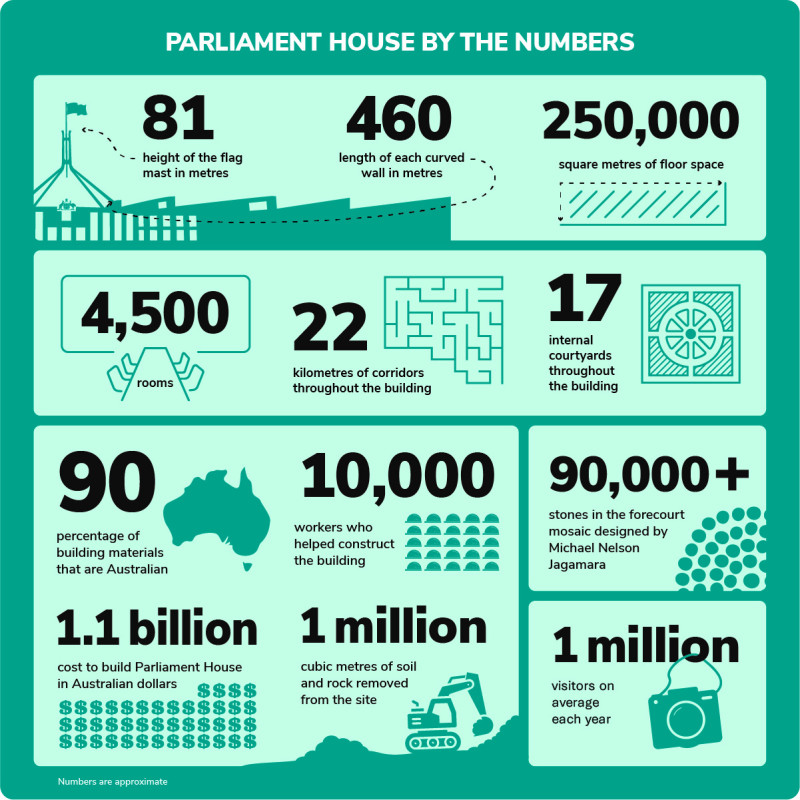How long did it take to build the Parliament House?
Hi there, Baswa! Thank you for your question!
It took around 6 years to build Parliament House.
Although the turning of the first sod occurred on 18 September 1980, construction didn’t commence until 12 November 1981 when the Prime Minister, the Hon Malcolm Fraser, poured the first concrete.
The goal was to have the building completed by 26 January 1988 – Australia Day. The project was completed on schedule. Parliament House was officially opened by Queen Elizabeth II on 9 May 1988. This date was picked to match the opening of the first federal Parliament in Melbourne on 9 May 1901 and the opening of provisional (Old) Parliament House in Canberra on 9 May 1927.
The building of the Australian Parliament House was a big job! Over 10 000 workers were involved in its construction using 90% Australian made materials.
Parliament House by the numbers

Parliamentary Education Office (peo.gov.au)
Description
- 81 – height of the flag mast in metres
- 460 – length of each curved wall in metres
- 250,000 – square metres of floor space
- 4,500 – rooms
- 22 – kilometres of corridors throughout the building
- 17 – internal courtyards throughout the building
- 90 – percentage of building materials that are Australian
- 10,000 – workers who helped build the building
- 1.1 billion – cost to build Parliament House in Australian dollars
- 1 million – cubic metres of soil and rock removed from the site
- 90,000+ – stones in the forecourt mosaic by Michael Nelson Jagamara
- 200 – number of years Parliament House is designed to last
- 1 million – visitors on average each year
Numbers are approximate.
This work is licensed under a Creative Commons Attribution-NonCommercial-NoDerivs 3.0 Unported License.
You are free to share – to copy, distribute and transmit the work.
Attribution – you must attribute the work in the manner specified by the author or licensor (but not in any way that suggests that they endorse you or your use of the work).
Non-commercial – you may not use this work for commercial purposes.
No derivative works – you may not alter, transform, or build upon this work.
Waiver – any of the above conditions can be waived if you get permission from the copyright holder.
